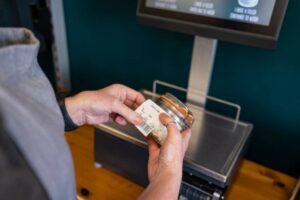Labels are a great way to direct consumers to your products and brand. They can include instructions for use, nutrition information, and creative designs that catch attention.
Several different Ariel label printing Adelaide techniques include offset, flexo, and digital. Let’s take a closer look at each one.
Digital labels are printed on rolls and laser cut to shape, meaning that no cutting dies are required – opening up new economies of scale.
Offset printing
 Offset printing is an excellent option for large-volume print jobs and offers many benefits over digital printing. It is perfect for jobs that require a high degree of colour accuracy and consistency. It also allows using various papers, including those with metallic or fluorescent inks.
Offset printing is an excellent option for large-volume print jobs and offers many benefits over digital printing. It is perfect for jobs that require a high degree of colour accuracy and consistency. It also allows using various papers, including those with metallic or fluorescent inks.
Unlike digital printing, which applies ink to the paper, offset printing creates an image on an aluminium plate. This is then printed onto a rubber blanket and then on the form. This process is much slower than digital, but the result is excellent. It is also ideal for jobs that need to be printed on various materials, including cardboard and plastics.
While digital printing may be the best choice for small-volume runs, offset printing is the most cost-effective for high-volume jobs. Its higher dpi’s, LPIs and broader colour gamuts allow for impeccable print quality. Additionally, it can print Pantone spot colours – a marketing dream for brands that want to ensure their ink matches precisely with the intended shade. Digital printing is getting better at matching Pantone inks, but they can never match the fidelity of an offset job. This makes offset lithography the perfect choice for larger commercial business marketing projects.
Flexo printing
Flexo printing is a high-quality, cost-effective method for producing labels. It uses flexible relief plates that can be printed on almost any substrate material, including paper, plastic film, and metallic surfaces. The print quality is superior to digital printing, and it can handle large volumes. Flexo printing also offers more durability than digital printing, and it can be used with a wide variety of inks, including eco-friendly water-based inks.
The flexo printing process is similar to letterpress and offset printing but has improved over time. It utilizes flexible plates with raised sections linked by a doctor’s blade to create the final image. The result is crisp and clear images, and it can produce a wide range of colours using the CMYK colour system. The flexo printing process is fast and efficient and can be used for short to long print runs.
Flexo printing is more in demand than ever, as it offers various benefits, including durability and low costs. It is also highly customizable, allowing manufacturers to customize the design to fit their products’ needs. The resulting label is more durable than traditional paper and can resist abrasions. It also reduces the use of chemicals and solvents, which can be toxic. In addition, it is suitable for all types of packaging, including bottles, boxes, and paper bags.
Digital printing
Digital printing is the process of printing on different media like paper, fabric, and plastic using inkjet printers. It can produce high-quality graphics and colours. It is also capable of printing custom designs. Therefore, it does not require plates and is relatively faster than traditional printing. It is also cheaper than conventional printing because there is less machine setup time.
Digital printing has much to offer and is quickly becoming the preferred method for custom label printing. It is perfect for low-volume orders, especially if you need prototypes or to test your product in a new market. It can also save you money by cutting out machine setup costs, which can be a massive chunk of the overall cost of a short run. In addition, digital printing is the only method that can guarantee 100% registration of your colours. This is a big deal because it will ensure that all your labels look the same every time.
Vinyl stickers
Vinyl stickers are versatile, durable, and visually appealing. They can be used on various surfaces, including walls, vehicles, and packaging, and printed with intricate details and vivid colours. They can also be used to promote a brand or service and effectively advertise on a budget. However, there are some things to remember when using vinyl stickers, such as the material and printing process.
The production of vinyl stickers requires a significant amount of energy. The raw materials for the vinyl are obtained from fossil fuels produced from decayed plants and animals. They are then heated and combined with ethylene to form polyvinyl chloride and vinyl. Plasticizers are added to make the film flexible, and pigments are used to colour it. The resulting product is then cut into shapes and sold to businesses for use on products or packaging.
One of the most essential benefits of vinyl stickers is their durability. They can withstand harsh environmental conditions, such as sunlight and extreme temperatures, and can be used for long periods. They are also water-resistant so that they can be applied to wet surfaces. In addition, vinyl can be printed with intricate graphics that would be impossible to print on paper. This makes them ideal for promoting small businesses and tiny companies. For more information about Ariel label printing Adelaide, click here.